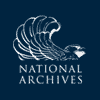General Orders, 22 October 1779
General Orders
Head-Quarters Moores House [West Point]
Friday Octr 22nd 1779.
Parole Chamblee— C. Signs Danbury—Charlestown.
Varick transcript, DLC:GW.
Adj. Gen. Alexander Scammell’s orderly book entry for this date includes a general order: “The fascien Cutters under Colo. Koscuiszko from the North Carolina Brigade to be Augmented with six Men a Subaltern to command the whole” (orderly book, 17 Oct. 1779–22 March 1780, DNA: RG 93, Orderly Books, 1775–1783, vol. 33).
On this date, and for the rest of 1779, GW operated in close proximity to his army, which numbered about 23,500 effective troops, predominantly infantry, until detachments later in the fall of two North Carolina regiments and the Virginia division subtracted approximately 4,000 men from his direct command. Other reductions occurred because of furloughs, resignations, and enlistment expirations, leaving GW with about 14,300 effective troops at the end of the year (see Samuel Huntington to GW, 11 Nov., and n.3; GW to Huntington, 29 Nov., and the source note to that document; and 136–46). The lower Hudson River Valley and vicinity served as the primary field of activity until the troops moved to winter quarters—for the most part near Morristown, N.J.—in late November and early December (see Nathanael Greene to GW, 14 Nov., and n.1; and GW to Greene, 30 Nov., and n.2).
Assistance with GW’s correspondence during this period came from his secretary Robert Hanson Harrison, assistant secretary James McHenry, and aides-de-camp Alexander Hamilton, Richard Kidder Meade, and Tench Tilghman. Hamilton’s engagement with correspondence resumed only in early December after his return from the southern New Jersey coast, where he had been sent for a potential rendezvous with a French fleet that never took place (see Planning for an Allied Attack on New York, c.3–7 Oct., editorial note). George Augustine Washington, GW’s nephew who pondered additional military service as an officer, visited at headquarters during this period and occasionally helped with correspondence (see GW to William Woodford, 18 Dec.). Maj. Caleb Gibbs, who commanded GW’s guards, also performed minimal correspondence duties and was responsible for the money to pay GW’s expenses (see the source notes for General Orders, 6 Nov. and 23 Dec.).

![University of Virginia Press [link will open in a new window] University of Virginia Press](/lib/media/rotunda-white-on-blue.png)
